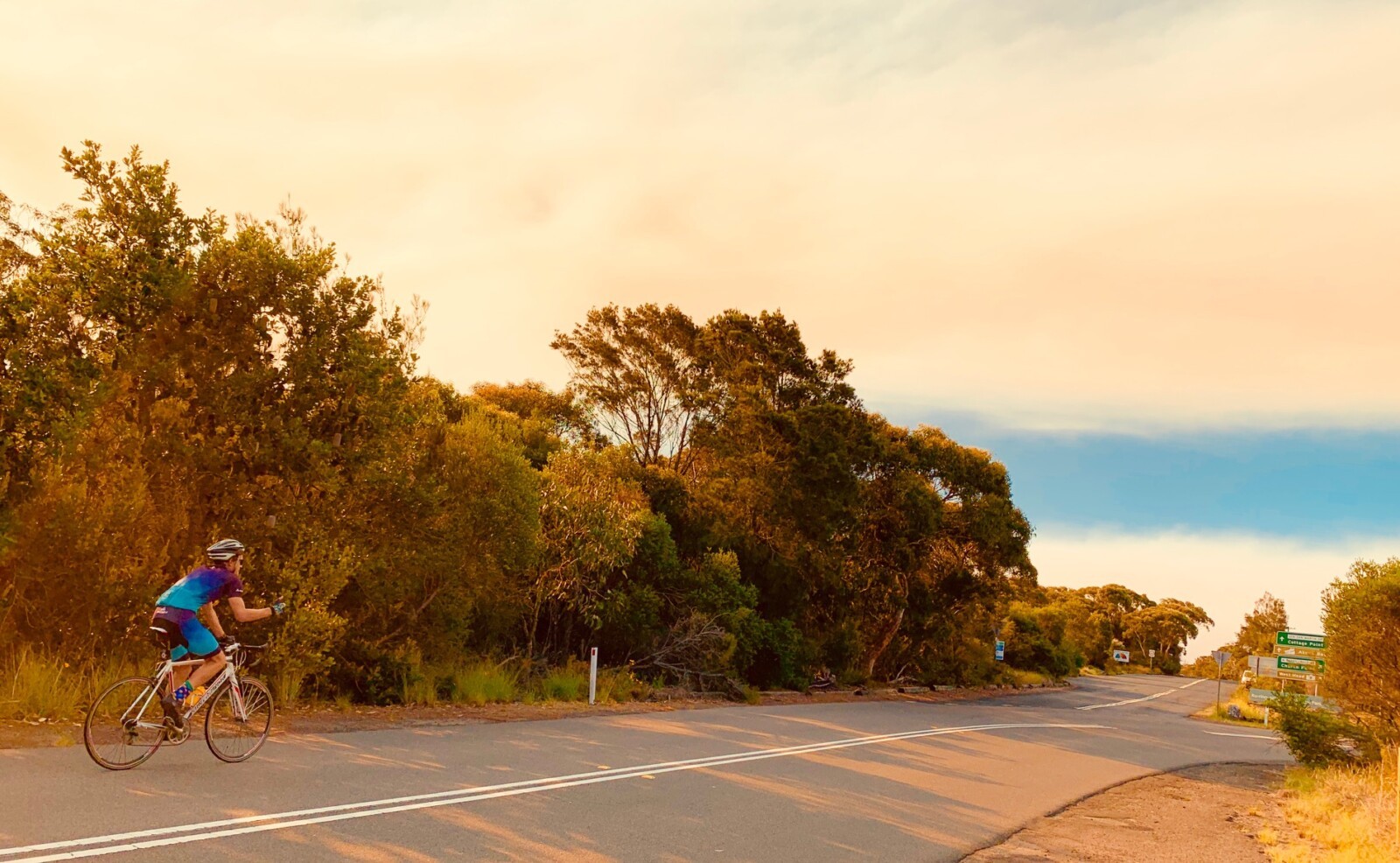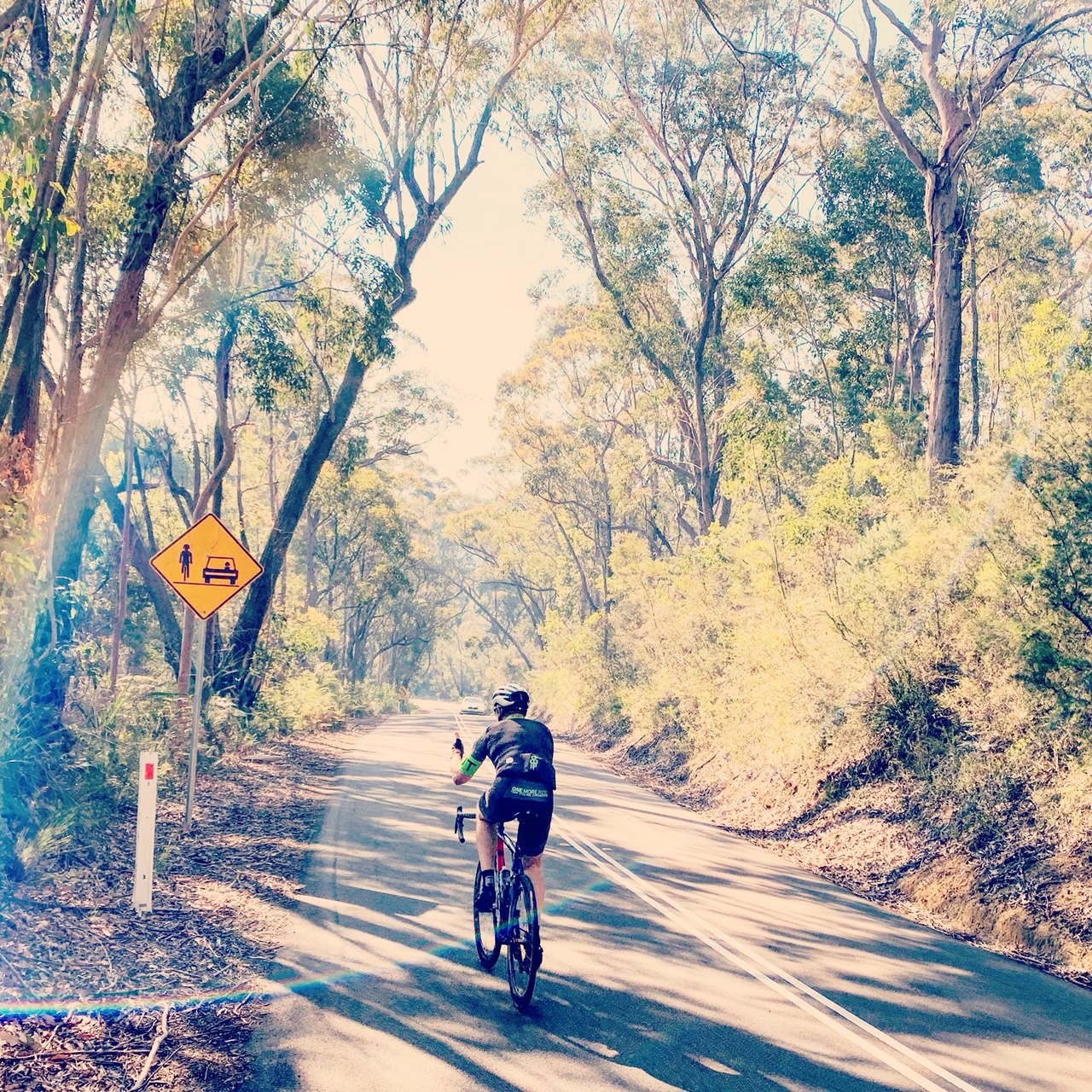With much of the Australian East Coast blanketed by bushfire smoke, authorities have warned of the serious health effects of the ongoing crisis.
In many areas the Air Quality Index (AQI) has risen to ‘Very Poor’ and even ‘Hazardous’ – ratings that come with advice to avoid exercise and even remain indoors – obviously not the kind of news keen cyclists want to hear.
The issue is the particulate matter (PM), fine particles in the smoke and air. NSW Health say particles with a diameter of 10 micrometres or less (known as PM10) are small enough to pass through the throat and nose and enter the lungs. When inhaled these particles can affect the heart and lungs and cause serious health effects.
Particles with a diameter of 2.5 micrometres or less (PM 2.5) are so small they can get into the lungs and even the bloodstream.
The most common effects from exposure to particulate matter include –
- Irritated eyes, nose and throat
- Worsening asthma and lung diseases such as chronic bronchitis
- Heart attacks and arrhythmias (irregular heart beat) in people with heart disease
- Increases in hospital admissions and premature death due to diseases of the respiratory and cardiovascular systems

Poor Air Quality, Less Cycling
The ongoing situation appears to have led to a drop in cycling participation. Far less people have been seen on regular routes with many resorting to either early morning rides, training indoors, or the frustration of waiting it out.
The official advice is –
- Substitute exercise with a less intense activity
- Aim for morning activities
- Reduce overall outdoor exercise time
Over To You
We asked the Bicycling Australia social community how they are managing to keep the legs turning over, here is a sample of the numerous responses –
- ‘ 90kms, 3 days ago, now a terrible sinus infection. Not happy being off the bike.’ Hans Giebeler
- ‘I work in Lismore in an office and we have a daily lunchtime riding group. If we gave in to the smoke, we wouldn’t have ridden in weeks. That would be far worse for our mental health than anything else. Someone commented today that smoke days and non smoke days are now the norm. Last week, on a non smoke day, we opened all the office windows, as the air quality on the outside was better than the stale smoky air inside.’ Bernard Thomas
-

A rider makes his way up the McCarrs Creek Rd climb north of Sydney as smoke lingers in the area. Image: Nat Bromhead. ‘Crap isn’t it? Still riding, but trying to avoid sharp intervals outdoors, saving them for the trainer in the garage.’ Peter Maniaty
- ‘Yep…..still riding. Every day before work and on weekends. Some days the smoke haze is worse than others. It’s the norm now unfortunately.’ Melissa Allen
- ‘I’m still riding the air is pretty good early, the dew must keep smoke down. It’s so thick by lunch time my eyes are watering each day. I’ve just upped my preventer a bit.’ Geoffrey Watson
- ‘Get a little tight in the chest with asthma. Just hate being off the bike too long.’ Tim Rudolph
- ‘I was just saying today how annoying it’s becoming that I can’t ride, getting frustrating.’ Brad Cairnduff
- ‘Riding the mountain bike and keeping the intensity down to avoid lungs filling up with smoke.’ Michael G Jak
Less Travel & Tourism?
It would come as no surprise to find the ongoing fire situation appears to be leading to a drop in travel, tourism and visitor numbers. An example of this is one respondent who wrote –
- ‘On holidays on NSW North Coast a few weeks ago. Couldn’t MTB as forests all closed. After a couple of road rides, had to stop, as needed my asthma puffer with irritated lungs..usually only needed with a normal winter virus. Escaped & headed to Victoria for the rest of our holiday and rode there.’ Christine Meijborg
How To Check The Air Quality Index (AQI)
The following measurements are a guide to how the AQI may effect your health.
VERY GOOD to GOOD 0-66. Air quality is considered good, and air pollution poses little or no risk.
FAIR 67-99. Air quality is acceptable. However, there may be a health concern for very susceptible people.
POOR 100-149. Air quality could be a problem for susceptible people. For example, people with lung disease are at greater risk from exposure to ozone, while people with either lung disease or heart disease are at greater risk from exposure to particle pollution. The general population is not likely to be affected when the AQI is in this range.
VERY POOR 150-200. Everyone may begin to experience health effects. People from susceptible groups may experience more serious health effects.
HAZARDOUS 200+. Everyone may experience more serious health effects. The AQI typically only reaches this level during major bushfires or dust storms.
To check the latest AQI level for your area anywhere in Australia visit THE AQICN website.
Our hearts go out to all affected by this terrible bushfire crisis – May we get some respite soon.


